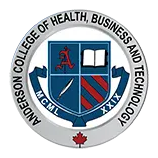From Classroom To Life
- Gain real-time knowledge and best-practices onsite from our industry-expert instructors and offsite through a practicum with companies and laboratories
- Work within our fully equipped cardiology laboratory
- Get hands-on training in non-invasive diagnostic cardiology procedures such as electrocardiograms, ambulatory monitoring, exercise tolerance testing and more, using various state-of-the-art laboratory equipment
What You Should Know
As a cardiology technologist you should:
- Have visual acuity with or without corrective lenses to identify cyanosis and absence of respiratory movement in a patient
- Be able to hear with or without auditory aids to understand the normal speaking voice without viewing the speaker’s face (to ensure that the Cardiovascular Technologist will be able to attend a patient’s call for help)
- Have physical ability enough (minimal impairment of upper and lower extremities) to perform cardiopulmonary resuscitation as well as move and position patients
- Be able to speak in a way that can communicate with staff and patients in a timely manner
- Have good manual dexterity and enjoy working with your hands
- Be prepared to be exposed to the symptoms of hospitalized patients
- Be careful in considering whether this program is right for you if, as a prospective student, you have any issues with back, neck, or arm injury or serious skin disorders such as psoriasis, eczema, dermatitis or a latex allergy. If you have any of these concerns, we suggest you contact your physician
- Have up-to-date Hepatitis B and the flu vaccines, as they are strictly required and are available at any walk-in clinic or through your physician
- Be prepared to work with both females and males
Admissions Process
For our Cardiology Technology Diploma program, we select candidates who demonstrate the potential to become Canada’s future health care leaders. Every application is considered on its own merit.
To be considered for admission, you must demonstrate that you have an OSSD (Ontario Secondary School Diploma) and have completed Grade 11 Math or Grade 12 Applied Math (C or U level); Grade 11 Science – Chemistry or Biology or Physics (C or U level); and Grade 11 English (C or U level). Students completing the English requirement at a high school in a country other than Canada and who have English as a second language must complete an acceptable English Assessment TOEFL (Graduate Certificate: 580 for the paper-based test or 237 for the computer-based test, or 88+ minimums for the Internet-based test) or equivalent testing.
Mature students must have completed secondary school with one Science, and English for College and/or University level or equivalent.
Note that this is the minimum requirement and meeting the same does not guarantee admission to the program.
Application Process
Transcripts
Submit your Ontario secondary school transcript and diploma. Applicants with a foreign diploma, degree, certificate (or other proof of credential) applying must have their transcripts evaluated to ensure they meet Canadian standards. This can be done via an evaluation from an accepted credential assessment service such as WES, ICAS or CES.
Assessment Exam
Applicants will be scheduled to write and pass the Wonderlic Test (a Superintendent approved qualifying test).
Personal Statement
Write a personal statement expressing your interest in joining the program and how your past studies and related professional experience have prepared you for the program (maximum 500 words in length).
Resume and Interview
Applicants must undergo an interview with the Program Chair. Students will submit an updated resume as well as answer an interview questionnaire both of which must be handed in during the interview date.
